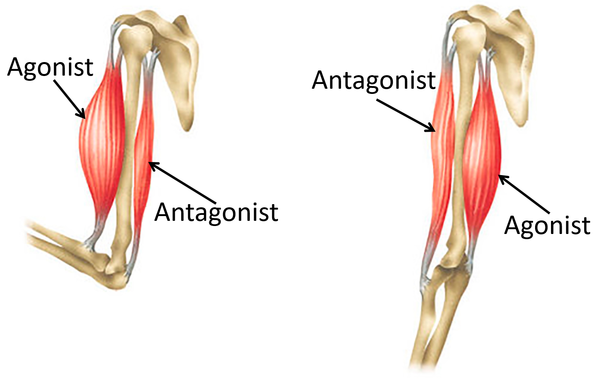Difference between revisions of "Antagonistic Muscles"
(Created page with "==Key Stage 3== ===Meaning=== '''Antagonistic muscles''' are a pair of muscles that work to move a bone in opposite directions. ===About Antagonistic Muscles===") |
|||
| (One intermediate revision by the same user not shown) | |||
| Line 4: | Line 4: | ||
===About Antagonistic Muscles=== | ===About Antagonistic Muscles=== | ||
| + | : When a [[muscle]] gets shorter it has [[contract]]ed and when a muscle gets longer it has relaxed. | ||
| + | : Most [[muscle]]s come in '''antagonistic''' pairs. This means when one [[contract]]s the other must relax. | ||
| + | |||
| + | {| class="wikitable" | ||
| + | |- | ||
| + | |[[File:AntagonisticPair.png|center|600px]] | ||
| + | |- | ||
| + | | style="height:20px; width:600px; text-align:center;" |When a [[muscle]] [[contract]]s it is called the 'agonist' and when it relaxes it is called the 'antagonist'. | ||
| + | |} | ||
Latest revision as of 11:07, 14 September 2018
Key Stage 3
Meaning
Antagonistic muscles are a pair of muscles that work to move a bone in opposite directions.
About Antagonistic Muscles
- When a muscle gets shorter it has contracted and when a muscle gets longer it has relaxed.
- Most muscles come in antagonistic pairs. This means when one contracts the other must relax.
| When a muscle contracts it is called the 'agonist' and when it relaxes it is called the 'antagonist'. |
